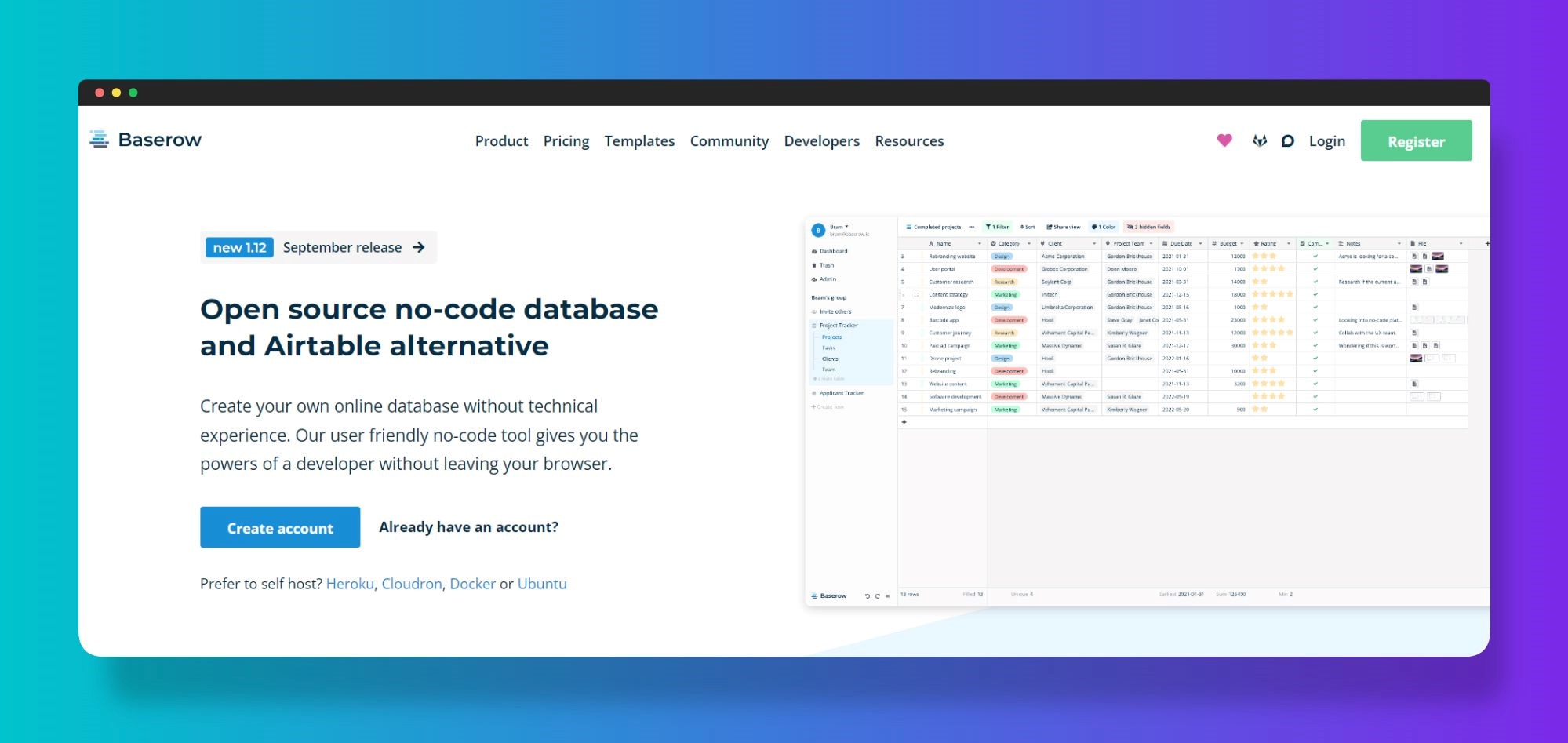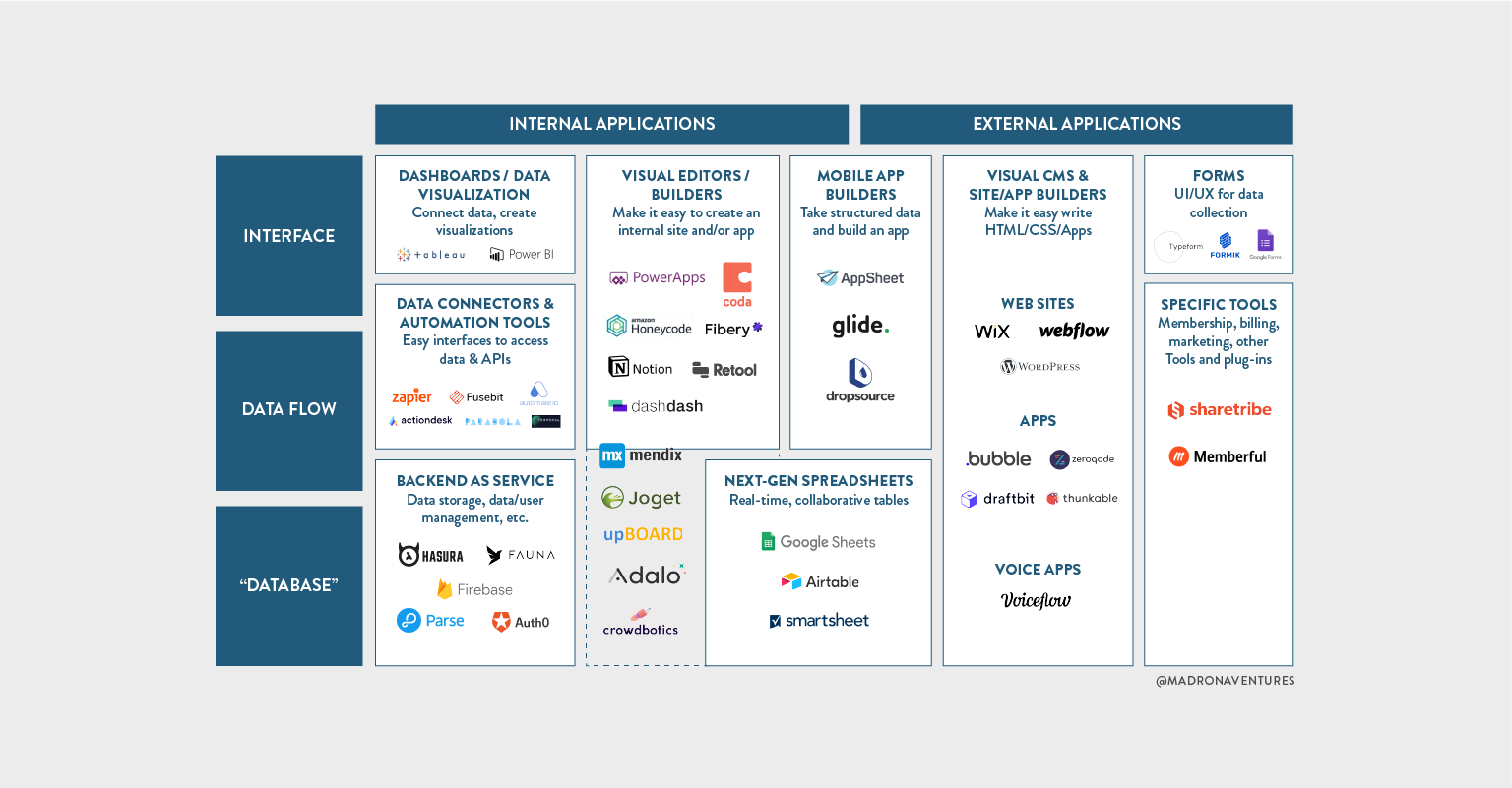Streamline Open System Data Source Development with No-Code Development Platforms
Streamline Open System Data Source Development with No-Code Development Platforms
Blog Article
Discovering the Advantages of Scalable Databases That Require No Coding Abilities for Effective Data Monitoring Solutions
The appearance of scalable data sources that eliminate the need for coding abilities presents a transformative possibility for companies seeking efficient information administration options. By making it possible for non-technical customers to harness the power of information via intuitive interfaces, these systems improve access and foster cooperation throughout diverse groups. Their cost-effectiveness and versatility to developing company needs can dramatically streamline operational procedures. As we take into consideration the implications of such developments, it comes to be crucial to analyze how they can reshape the landscape of information monitoring and drive lasting development in a competitive environment.
Enhanced Availability for Individuals
Enhanced ease of access for customers is a crucial aspect of scalable databases, making certain that information management systems are straightforward and user-friendly. In an era where data-driven choices are critical, access enables a larger variety of users, including those without substantial technical expertise, to involve with database systems effectively. This democratization of information accessibility promotes improved cooperation throughout divisions, encouraging staff members to make and extract understandings informed decisions.
Straightforward user interfaces, such as drag-and-drop functions and aesthetic data depiction, streamline complex information communications. These improvements lower the discovering contour related to conventional database administration, allowing customers to concentrate on leveraging data instead of grappling with technological intricacies. Scalable databases usually include real-time analytics and adjustable dashboards, providing users with immediate insights tailored to their details requirements.

Cost-Effectiveness and Resource Savings
Reliable data management not only pivots on availability but likewise on cost-effectiveness and resource cost savings. Scalable data sources created for customers with no coding skills substantially reduce monetary burdens usually associated with conventional database management systems. By removing the demand for specialized shows expertise, companies can allot their resources extra efficiently, concentrating funds on core company tasks instead of extensive training or employing proficient employees.
Moreover, these data sources usually utilize cloud-based remedies, which additionally lower costs connected to equipment and maintenance. Organizations can scale their database solutions according to their requirements, preventing the expenses sustained from over-provisioning sources. This adaptability indicates businesses can adapt to altering needs without sustaining unneeded prices, resulting in substantial long-term financial savings.
Furthermore, straightforward user interfaces streamline data entry and monitoring processes, minimizing the moment spent on administrative tasks. This efficiency equates into labor expense financial savings, allowing teams to focus on critical efforts instead of regular upkeep. In general, taking on scalable data sources that require no coding skills fosters an extra affordable strategy to information administration, allowing organizations to maximize their resources while keeping high levels of functional efficiency.
Improved Collaboration Across Teams

Moreover, scalable data sources assist in seamless communication amongst team members. With straightforward interfaces that call for no coding skills, employees can conveniently develop, customize, and share reports or control panels tailored to their specific requirements. This democratization of information encourages non-technical users to see contribute understandings, enhancing the collective environment.
Furthermore, these data sources support concurrent gain access to, permitting multiple customers to deal with the exact same dataset at the same time. This feature enhances efficiency, as teams can participate in joint data analysis without the danger of variation control concerns. The capability to leave remarks or notes straight within the data source further promotes discussion and makes clear data interpretations.
Streamlined Data Management Processes
In today's data-driven setting, companies acknowledge the requirement of structured information management processes to make best use of performance and accuracy. By leveraging scalable data sources that require no coding skills, organizations can streamline their information handling and lower the complexities generally connected with conventional database systems. This availability empowers non-technical users to engage directly with information, facilitating quicker decision-making and lowering reliance on specialized IT personnel.
Streamlined information monitoring processes enhance process by automating routine jobs such as information entrance, validation, and coverage. Automated information integration ensures that details from various sources is accumulated effortlessly, getting rid of silos and cultivating a linked view of critical business metrics (no-code). Straightforward user interfaces enable workers to adjust data easily, enabling them to create understandings that drive strategic initiatives without the need for substantial training.
This effectiveness not only accelerates operational procedures but additionally decreases the potential for human error, making certain that information continues to be reliable and exact. Eventually, structured data management procedures via scalable data sources cause boosted performance, enabling companies to concentrate on core tasks while making certain that their data monitoring techniques are reliable and reliable.
Scalability for Expanding Organizations

For broadening business, the ability to scale up or down is important. A scalable database can handle an increase of data produced from brand-new consumers, products, or services, guaranteeing that organization procedures stay nonstop. These data sources offer the capability to manage peak tons successfully, which is vital during durations of fast development or seasonal spikes.
Additionally, many scalable data source remedies are created with easy to use interfaces that call for no coding abilities, equipping non-technical staff to take care of data properly (no-code). This democratization of information management enables companies to allot resources strategically and minimize reliance on specialized IT personnel
Eventually, embracing a scalable data source not only boosts operational performance however likewise promotes an environment where services can advance and introduce without the restrictions over here of traditional data source systems. This versatility settings organizations for lasting success in today's affordable landscape.
Conclusion
Finally, scalable data sources that need no coding abilities provide substantial benefits for efficient information monitoring. These systems enhance access for non-technical users, reduce operational expenses, and advertise cooperation across groups. By streamlining data management processes and providing scalability for expanding businesses, such solutions make it possible for companies to adapt to transforming demands effectively. Ultimately, the adoption of these user-friendly databases cultivates advancement and placements services for long-lasting success in a dynamic atmosphere.
Improved availability for users is a crucial aspect of scalable databases, making sure that information management systems are user-friendly and user-friendly.Straightforward interfaces, such as drag-and-drop features and visual information representation, simplify complicated information interactions. Overall, taking on scalable data sources that look these up call for no coding skills promotes an extra cost-effective strategy to data administration, making it possible for organizations to maximize their resources while keeping high levels of operational effectiveness.
By leveraging scalable databases that require no coding abilities, services can simplify their information handling and reduce the intricacies typically connected with typical data source systems - no-code.Structured data management processes enhance operations by automating regular jobs such as data entrance, validation, and reporting
Report this page